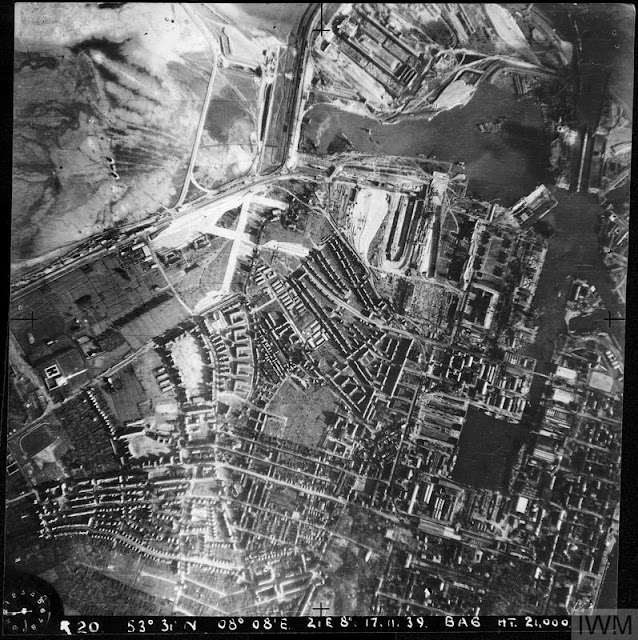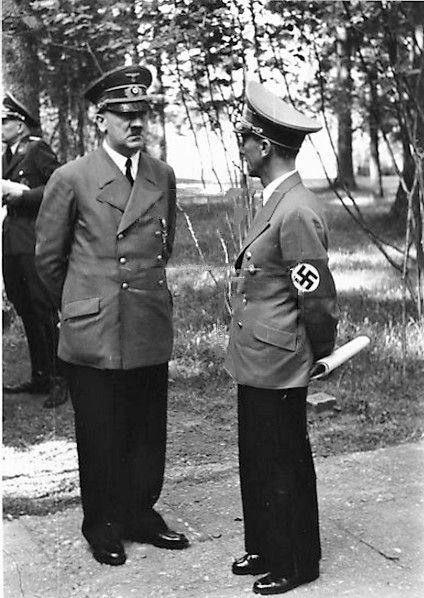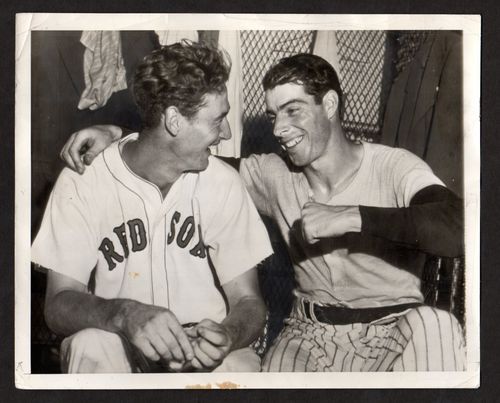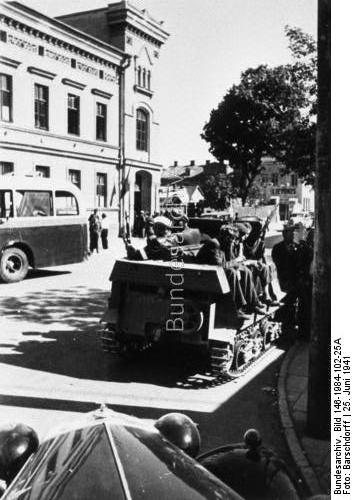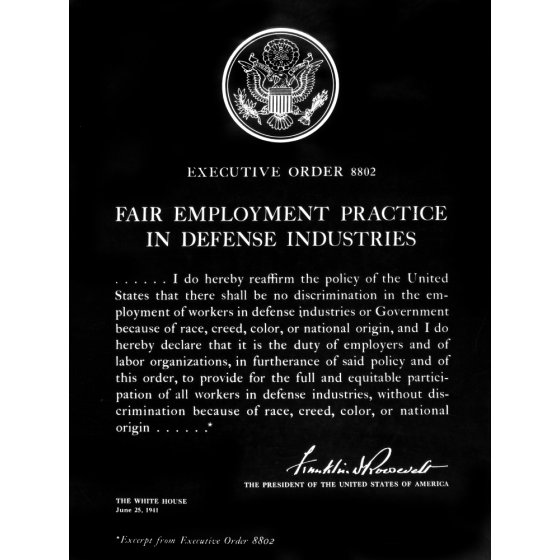Thursday 10 July 1941
 |
| German infantrymen observing the enemy from their trenches shortly before attacking inside Soviet territory. July 10, 1941. |
Well, it is 23 years later, and Mannerheim still controls the Finnish military. A lot has changed in the world, but one thing is the same: it is time to gear up again to right some perceived wrongs. In today's Order, Mannerheim states:
... [I]n 1918 during the War of Liberation I stated to the Finnish and Viena Karelians, that I would not set my sword to the scabbard before Finland and East Karelia would be free." (Finnish: Vapaussodassa vuonna 1918 lausuin Suomen ja Vienan karjalaisille, etten tulisi panemaan miekkaani tuppeen ennen kuin Suomi ja Itä-Karjala olisivat vapaat).This Order is intended to spur the Finnish offensive in Karelia that opens today.
 |
| Marshal Mannerheim - one of the very few Axis leaders to come out of World War II with his reputation intact. |
Farther north, the Soviet defenses at Kayraly (on the route to the Murmansk railroad) and the Litsa River (Murmansk) firm as the Soviets take advantage of the terrain and send reinforcements. Finnish 3rd Division of III Corps, now on the Vyonitsa (Vonitsa) River south of Salla, also part of Operation Arctic Fox, is doing better than the German troops. It begins destroying Soviet troops using tactics developed during the Winter War.
In the Army Group North sector, there is heavy fighting around Pskov, which the Germans have captured. German 4th Panzer Group (Hoepner) holds the city as it awaits the infantry.
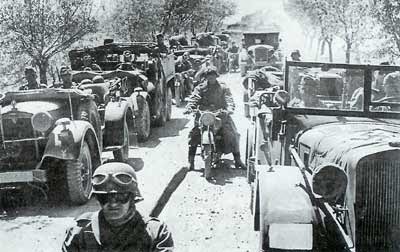 |
| General Guderian's Panzer Group 2 moves toward Smolensk (note the Wanderer W-14 Headquarters car), on or about 10 July 1941. |
In the Army Group South sector, the German advance continues. German 13th Panzer Division reaches the Irpin River, only 10 miles from Kyiv.
The Vichy French Vichy French Air Force (Armée de l'Air de Vichy) is not yet defeated. A furious air battle develops in which five new French Dewoitine D.520 fighters attack an approaching bomber formation of RAF No. 45 Squadron. The French shoot down three Blenheim bombers, but the defending Australian P-40 Tomahawk fighters shoot down four (or more) French fighters.
Australian Private James Gordon earns the Victoria Cross for charging with his bayonet at a machine gun nest that was holding up his unit.
 |
| A StuG III Ausf B assault gun of Sturmgeschuetz-Abteilung 192 (note the skull on the logo). Army Group Center, July 1941. |
The RAF also sends three of the new Short Stirling bombers in a Circus operation attack Chocques power station. There is one loss.
After dark, RAF Bomber Command sends 98 Wellingtons and 32 Hampdens to bomb Cologne. The weather is poor, and this leads to inaccurate aiming, with only 62 bombers even hitting Cologne or its suburbs. There are two planes lost and only very light damage done to the target.
After dark, the Luftwaffe bombs Hull.
Luftwaffe ace Oblt. Rolf Pingel, Gruppenkommandeur of I./JG 26 (22 victories), is forced to crash-land his Bf 109F-2 near Dover. The plane is little-damaged and gives the RAF a copy of the newest version of Messerschmidt's fighter. The RAF repairs the plane and restores it to flying condition, using it in mock dogfights.
RAF Wing Commander Douglas Bader shoots down two Bf 109s, one over Bethune, Pas-de-Calais and another near Calais. Ace James Lacey also shoots down a Bf 109.
Soviet freighter Rasma hits a mine and is damaged and abandoned. Two German torpedo boats, S-26 and S-28, later come across the abandoned ship and sink it.
German auxiliary submarine chaser UJ-113 Nordmark sinks from unknown causes.
 |
| "Florin, California. This 23-year-old Nisei soldier volunteered for army service July 10, 1941, and is stationed at Camp Leonard Wood, Missouri. He obtained a furlough to assist his mother and family to prepare for evacuation. He is the youngest of six children, two of whom are volunteers in the Army of the United States." (National Archives and Records Administration 537848). |
The Luftwaffe bombs and sinks 1174-ton Norwegian freighter Svint about seven miles northwest of Kellan Head, Trevose, North Cornwall. There is one death.
British 196-ton motorboat Celano (tender to minesweeper HMS Tedworth) hits a mine and sinks in the Thames Estuary. The entire crew, six men, perishes.
The German crew of 7209-ton German blockade runner Hermes scuttles the ship when it is intercepted by Royal Navy AMC Canton about 300 hundred miles northwest of St. Paul.
The Kriegsmarine transfers its 6th Destroyer Flotilla (destroyers Friedrich Eckholdt, Hans Lody, Hermann Schoemann, Karl Galster, and Richard Beitzen) to Kirkenes, Norway. This is the first of many transfers to the far north of Norway by the Germans of surface ships. This accomplishes the dual goal of removing the ships from attack by the RAF and positioning them to attack Allied convoys to Murmansk.
A Short Sunderland flying boat, returning from a patrol, hits an uncharted reef while taxiing to its mooring and develops a leak. The skipper quickly beaches the plane to prevent it from sinking. The plane is later repaired in Reykjavik. Everyone survives.
Royal Navy submarine HMS Umpire (Lt. Mervyn R. G. Wingfield) is commissioned.
U-503 and U-578 are commissioned.
 |
| A Czech-built Panzer 38(t), June/July 1941. |
A five-vessel Axis convoy with an escort of three destroyers and three torpedo boats leaves Naples bound for Tripoli.
At Malta, the Italian Regia Aeronautica drops bombs on various points. They approach the island from the south and cross over to the north, enabling a quick escape back to Sicily to the north.
 |
| Fort Collins Municipal Railway #20 Trolley, Fort Collins, Colorado, July 10, 1941. |
Spy Stuff: George Johnson Armstrong is executed by hanging at HM Prison Wandsworth by Thomas Pierrepoint. Armstrong is the first British citizen to be executed under the Treachery Act 1940. He was charged and convicted on 8 May 1941 of communicating with the German Consul in Boston, Massachusetts, to offer Germany assistance in the war against Great Britain.
In the Philippines, the Japanese spy at the Japanese embassy in Manila, Mr. Negishi, reports to Tokyo on the cargo being unloaded from an American tender (20+ light tanks, ten gun platforms and coastal guns). Negishi also reports the arrival of US Navy transport USS President Taft carrying 800-1000 soldiers.
Anglo/Soviet Relations: Soviet Premier Joseph Stalin receives a message from British Prime Minister Winston Churchill. Churchill agrees to a proposal that Stalin has made through British Ambassador Stafford Cripps for a firm alliance. The two bedrock conditions of this alliance are that mutual aid is to be given "without any precision as to quantity or quality," and that neither country would conclude a separate peace.
Soviet/Mongolian Relations: The Soviets try, convict, and execute the 7th Prime Minister of Mongolia, Anandyn Amar. The Soviets have deemed Amar too popular and nationalistic and thus a threat to their rule in Mongolia. He is accused of various types of treason. Amar is shot and buried at the firing ground "Kommunarka" (Russian: Расстре́льный полиго́н «Коммуна́рка») near Moscow.
German/Japanese Relations: German Foreign Minister Ribbentrop asks the Japanese, as he has before, to attack the Soviet port of Vladivostok. The Japanese once again refuse to attack.
 |
| Blohm and Voss BV-222 "Wiking" flying boat. |
Italian Military: The Italians send 61,000 men in the Italian Expeditionary Corps (Corpo Spedizione Italiano in Russia or CSIR) to Russia. The CSIR includes a legion from the Independent State of Croatia (which is an Italian vassal state).
Soviet Military: Marshal of the Soviet Union Boris Shaposhnikov, Chief of the General Staff and Deputy People's Commissar for Defense, is added to the Stavka. He has been a prime factor in the Red Army's rapid buildup between 1939 and 1941.
Soviet Premier Joseph Stalin removes Marshal Semyon Timoshenko from his position as Red Army commander-in-chief. Stalin has demoted him to command of the Western Front.
Lev Mekhlis becomes deputy commissar of the Soviet Peoples Commissar of Defense.
 |
| Chrysler Tank Arsenal in Detroit, Michigan, 10 July 1941 (Hedrich-Blessing). |
The 2nd Marine Aircraft Wing (Brigadier General Ross E. Rowell, USMC) is activated at San Diego, California. It controls Marine Air Group Two based at Marine Corps Air Station Ewa, Hawaii.
US Government: President Roosevelt sends a request to Congress for an additional defense appropriation of $4.77 million.
Holocaust: Locals and/or Germans at Jedwabne, Poland herd 300-400 local Jews into a barn and burn it down. This is a controversial incident because many believe the Germans committed the atrocity. However, there is an alternate view (Michael Gross, "Neighbors," 2000) which claims that the local Polish citizens are to blame. In 2001, a new monument is erected in accordance with Gross's view.
American Homefront: Ferdinand Joseph LaMothe aka Jelly Roll Morton passes away in Los Angeles, California at the age of 50. He is famous for claiming to "invent" jazz, though it is more accurate to say that he contributed to jazz development and wrote many enduring jazz standards such as "King Porter Stomp," "Wolverine Blues," "Black Bottom Stomp," and "I Thought I Heard Buddy Bolden Say."
New York Yankee Joe DiMaggio goes 4-5 and hits safely in his 50th straight game. He is the only major league player (and perhaps the only player at any US professional level) to hit safely in 50 straight games.
 |
| Canadian National Railways No. 1432 at Armstrong, July 10,1941 (Trainweb.org, Bud Laws Collection). |
July 1941
July 1, 1941: US TV Broadcasting Starts
July 2, 1941: MAUD Report
July 3, 1941: Stalin Speaks
July 4, 1941: Pogroms in Eastern Europe
July 5, 1941: Germans on Schedule
July 6, 1941: Australians Attack Damour
July 7, 1941: US Marines in Iceland
July 8, 1941: Flying Fortresses In Action
July 9, 1941: British Take Damour
July 10, 1941: Sword and Scabbard Order
July 11, 1941: Cease-fire in Syria and Lebanon
July 12, 1941: Anglo/Russian Assistance Pact
July 13, 1941: Uprising in Montenegro
July 14, 1941: Katyusha Rocket Launchers in Action
July 15, 1941: Smolensk Falls
July 16, 1941: Stalin's Son Captured
July 17, 1941: Heydrich Orders Mass Executions
July 18, 1941: Twin Pimples Raid
July 19, 1941: V for Victory
July 20, 1941: The Man Who Wouldn't Shoot
July 21, 1941: Moscow in Flames
July 22, 1941: Soviet Generals Executed
July 23, 1941: Secret Plan JB 355
July 24, 1941: Operation Sunrise
July 25, 1941: US Naval Alert
July 26, 1941: Italian E-Boat Attack on Malta
July 27, 1941: MacArthur Returns
July 28, 1941: Auschwitz Exterminations
July 29, 1941: Rescue From Crete
July 30, 1941: Raid on Petsamo and Kirkenes
July 31, 1941: Final Solution Order
2020


